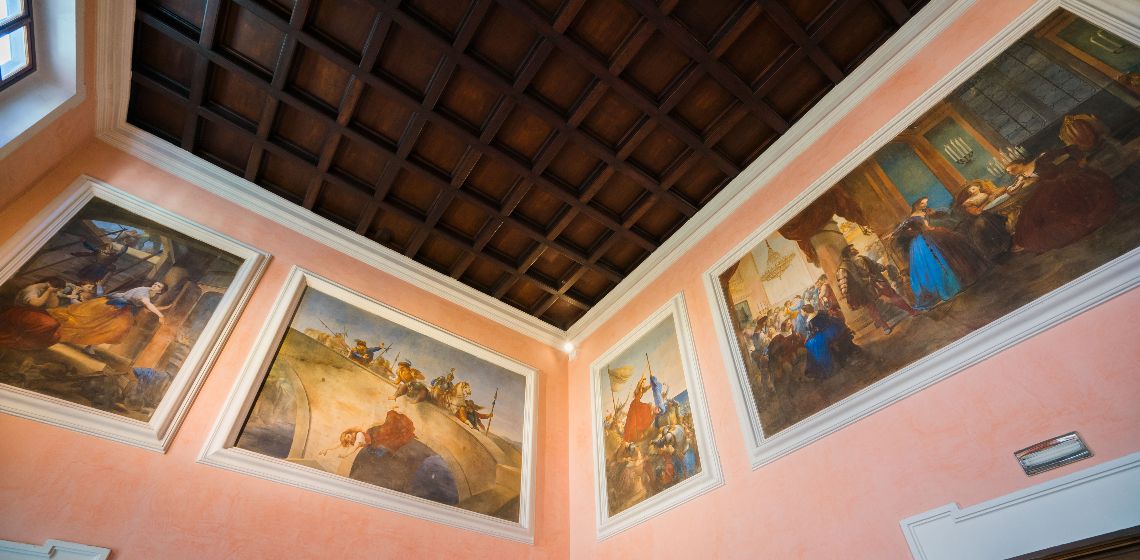
Girl power: the Seven Heroines of past painted in Pontassieve
A pink corner in the hills of Florence! Discover the Sala delle Eroine of Palazzo Sansoni Trombetta in Pontassieve.
A short distance from Florence, in the town hall of Borgo di Pontassieve, lies a hidden treasure dedicated to female heroism: the Hall of Heroines in Palazzo Sansoni Trombetta. This place, enriched by the magnificent frescoes of Ferdinando Folchi, celebrates the heroic deeds of extraordinary women of the past. This is one of the things to do and a place to see near Florence for those seeking an uncommon, unique cultural experience: a total immersion in history and art. An unmissable attraction to appreciate legacy, heritage and female empowerment through art.
Sala delle Eroine (Room of Heroines) – Palazzo Sansoni Trombetta
In the town hall of the village of Pontassieve, located south of Florence (30 minutes by car from the city), there is a room entirely dedicated to female heroism. The room in Palazzo Sansoni Trombetta in which a cycle of frescoes by Ferdinando Folchi, a 19th-century Florentine painter, depicts the heroic acts of seven women of the past, is called the Room of Heroines.
Congratulations go to the Trombetta family, a family of bankers from the island of Corfu, who, in unsuspecting times, dedicated an entire room of the palace representing power, economy, religious and political life to women. The family took possession of the palace in the 19th-century, taking over from the Anforti family and becoming related to the Sansoni family from Livorno. On the sides of their coat of arms, the allegorical figures of Italy and Greece are depicted as women and surrounded by symbols that refer to the intellectual greatness of the two states.
Opening hours Sala delle Heroine: Monday, Wednesday, Friday and Saturday 8.30 am - 1.30 pm; Tuesday and Thursday 8.30 am - 1.30 pm and 3.30 pm - 5.30 pm
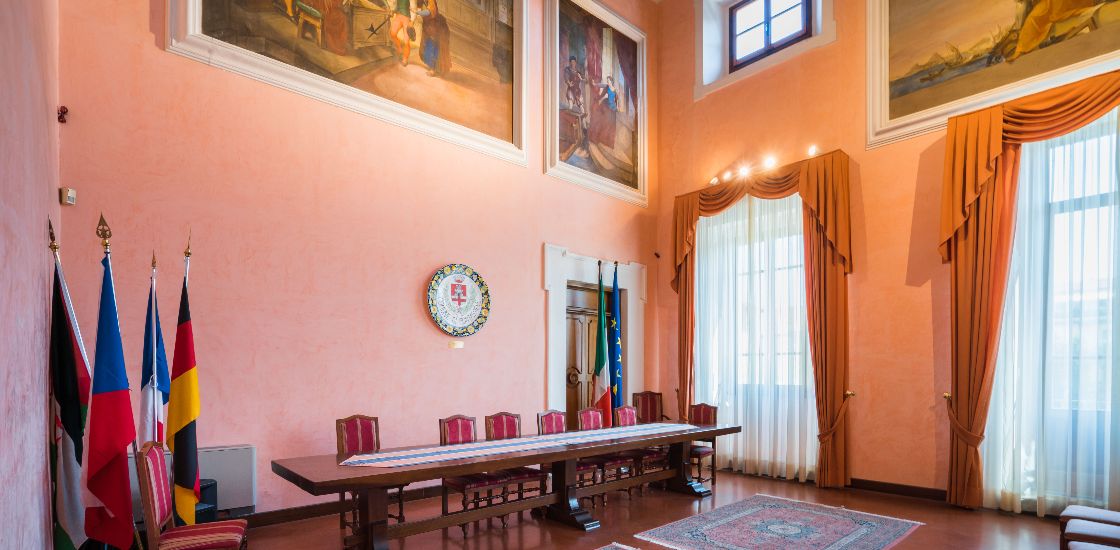
Who are the Seven Heroines
1. Stamira: the heroine of the siege of Ancona. The Ancona woman who set fire to the enemy assault vehicles of Archbishop Christian of Mainz during the siege of the city of Ancona is depicted as a female symbol, embodying love for the homeland dressed in gentle audacity.
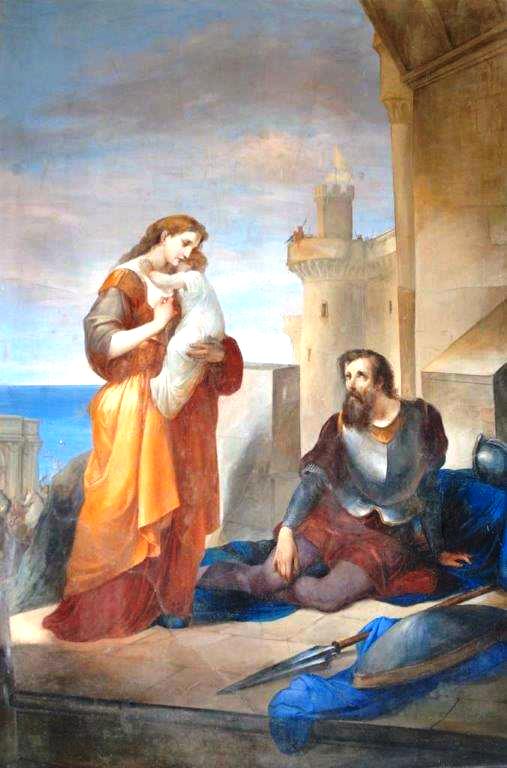
2. Giulia Aldobrandini: the dance of courage. The young Giulia, sixteen years old and daughter of the jurist and diplomat Silvestro Aldobrandini, whom the Medici had exiled to Urbino, refuses to dance with Francesco Ferrucci's murderer, the infamous Fabrizio Maramaldo and publicly denounces him as a vile murderer.

3. Caterina Segurana: the heroine of the siege of Nice. The fresco narrates the courageous action of an ordinary woman from Nice who took the flag with the fleur-de-lis of France from the hands of the enemy standard bearer and subsequently pierced him using the same banner. The episode occurs in the context of the dispute between Spain and France in 1543. With her bold gesture, the woman of the people saved Nice, besieged by Barbary pirates.
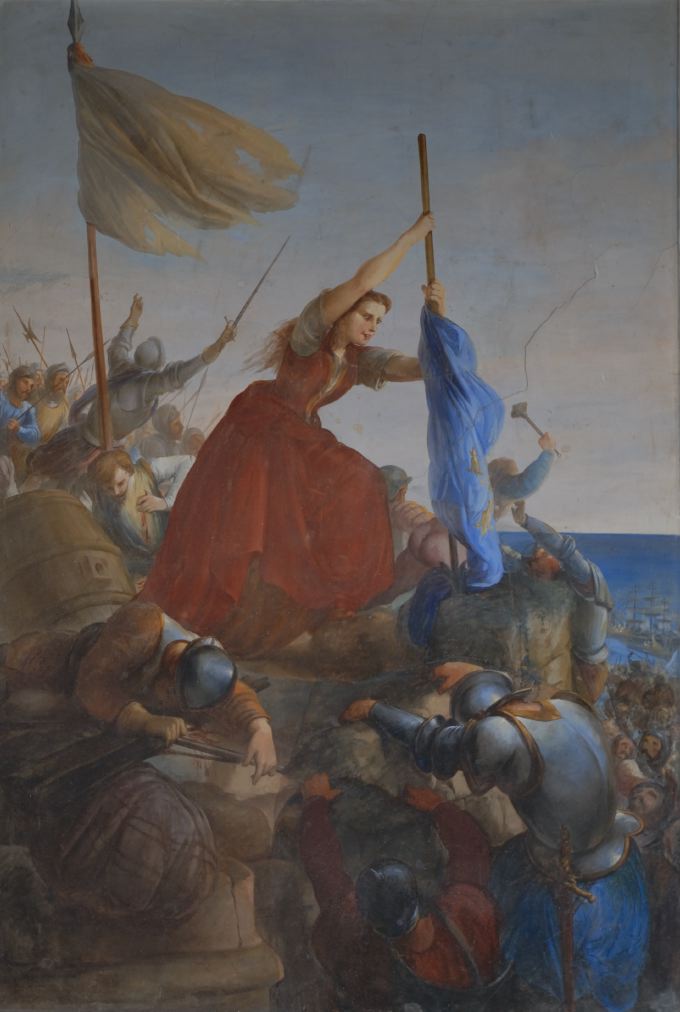
4. Lucrezia Mazzanti: the girl from Figline. She decides to throw herself from the Incisa bridge to escape the mercenaries besieging the Florentine Republic during the period 1529-30 and avoid the violence of the brutal captain. This extreme gesture represents a dive of no return into the waters of the Arno, a choice in the face of violence and the threat of sexual outrage, preferring "death with honour rather than life with shame".
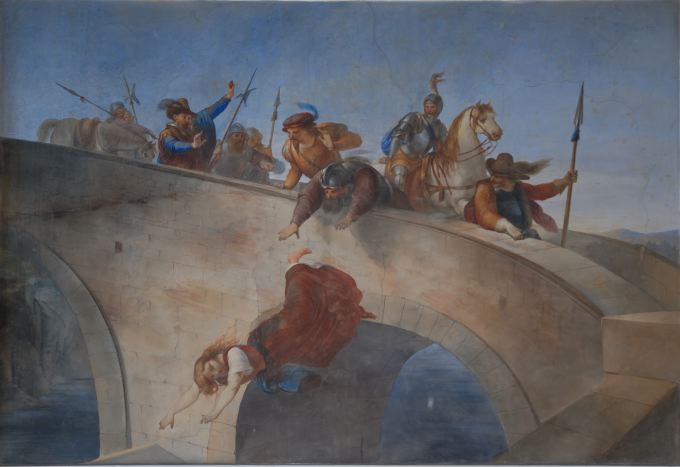
5. Alessandra or Belisandra Maraviglia: the fire of honour. The Venetian noblewoman is portrayed against the backdrop of the siege of Nicosia (Cyprus) in 1570 by the Turks. When the Venetian expedition to liberate Cyprus failed, Belisandra embarked with a thousand other enslaved people towards the Ottoman capital to avoid the sad and dishonourable fate that awaited Cypriot women, that is, being sexually enslaved people for the rest of their lives in Anatolia, preferred the death and revenge for her husband, and burned three ships. “The sea swallowed the mutilated corpses of the Turks and over a thousand Christian slaves.”
6. Ghita: the motherland. A Florentine silk worker, widowed and poor, decided to offer her son, still sixteen years old, to be enlisted among the city guards. In a painful choice, respecting the agreements of the Florentine Republic, which required gold or adult children in support of the republican cause, she urges her son to fight for his ideals and freedom and to return with the news of the liberation of his homeland or, in the alternative, to sacrifice oneself.
7. Luisa Strozzi: no means no. The fresco depicts Luisa Strozzi stopping the inappropriate advances of Duke Alessandro De Medici, and for this, she is then poisoned. It symbolises the Florentine nobility who opposed the Medici power to the bitter end and all the women who rebelled against the abuse of power.
Photo credits: https://www.comune.pontassieve.fi.it/






 All the services are provided by local merchants
All the services are provided by local merchants By using this site you support Florence
By using this site you support Florence We offer products with high-quality standards
We offer products with high-quality standards You stay sustainable
You stay sustainable It's a 100% trustworthy website
It's a 100% trustworthy website